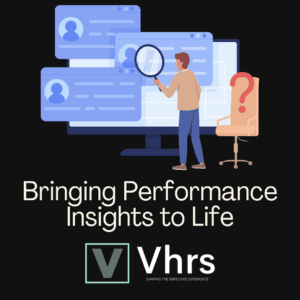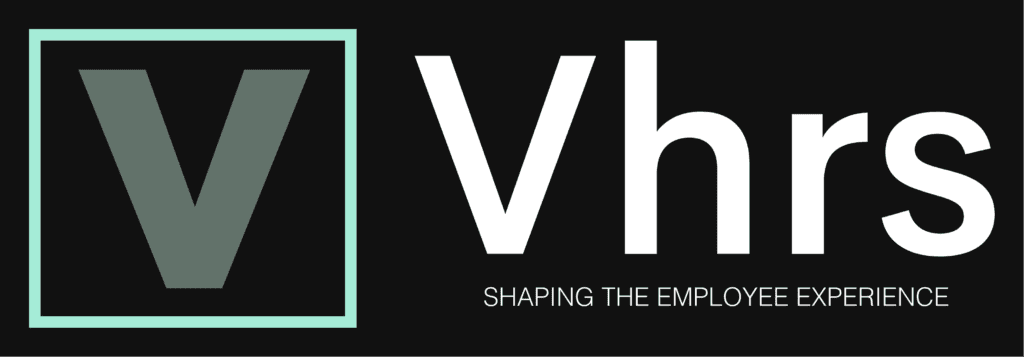
I spent sleepless nights throughout my HR career thinking about how to improve performance reviews. A 1 to 5 scale to measure a KPI/ OKRs, just wasn’t doing it for me. The conversations between manager and employee weren’t deep enough. The more time I spent explaining what the scale of 1 to 5 meant, the more confused people felt. I dreaded having to explain what getting a 3 out of 5 meant as opposed to getting a 5 out of 5, and I asked myself how I could make performance reviews more objective, as I didn’t trust the methodology.
It was when I read Harvard Business Review article titled The death of HR in 2019 that I decided to go back to the drawing board.I needed to completely reinvent the system, to find a way to make managers and employees get real value out of these sessions and to draw actionable insights from the data.
I started toying around with the idea of collecting information daily, to start ‘pulsing’ employees on a daily basis. The word pulsing was quite new back then, I had employees thinking I was going to measure their heart rate with my new system! It took a while until I started seeing the full benefits of this tool, but it was evident from the early days that there was something phenomenal about it. Getting information from employees firsthand was new. Each employee telling HR what they were busy with as opposed to measuring them against their job description felt groundbreaking.
It took various iterations to get a system of value for both employee and company. Here are a few things we discovered:
-
- The first thing we experimented with was the frequency of the pulse – we quickly realised weekly pulses were the most beneficial.
-
- We made the questionnaire as brief as possible to ensure it took no more than 5 minutes to complete.
-
- We carefully selected the questions that had the most relevance to create accurate reporting.
-
- And lastly, we came up with the concept of ‘sentiment tagging,’ which would replace the all confusing rating scale.
Let’s unpack this a little further…
Frequency
Daily pulsing felt like plain micromanaging. You would be better off completing a timesheet for that purpose. For this exercise you need inspiration, and it sucks the soul out of you to tell HR on a daily basis what you are busy with.
On the other hand, when we pulse employees on a monthly basis, it was clear that lots of important milestones and achievements were missed. Employees would often only recall what they did the past few days and forget about the previous weeks. So it became evident that weekly pulses were the way to go.
Questions
When I designed my first pulse I did not think much of the questions to be asked on a weekly basis. I just wrote the first thing that came to mind, which was something like: What did you do last week?
This then turned into: What task were you busy with during this week?
Which then turned into: Looking back at your week, what achievement are you most proud of?
And I finally settled on: What was your highlight from the past week?
That question works like a charm. The magic word was Highlights! Employees are inspired by this question and give meaningful answers that provide valuable insights for HR.
You might have noticed in the evolution of the question, the time component. When you pulse employees, you need to ask questions in retrospect, as that is where the inspirational factor comes into play.
We also asked employees for any last thoughts or general comments. This was an optional question and I didn’t have high hopes for it. Well, much to my surprise, this became an incredibly insightful part of the exercise. This question helped us understand exactly what employees were going through and capture the sentiment on the ground. This provided HR with the insight needed to be a proactive department.
From the answers that stemmed from this question, we have created work from home and flexi-time policies, activated the Employee Assistance Programme for trauma counselling, and heard of employees’ financial struggles which led to CTC reviews. When used correctly, this channel allows HR to be strategic and contribute to employee wellness.
Sentiment tagging
I mentioned my dislike for ratings at the beginning of this article, and the various ways to interpret them. I developed the concept of sentiment tagging (a term which we coined) to capture the employees’ feeling about a fact.
For example, below is the highlight of my week:
“I went to a conference and I had two interesting chats with people that have the potential to become leads. I emailed the individuals and have arranged for video calls to speak about their HR needs.” (Real highlight by the way!)
If I had a manager, they would then ‘sentiment tag’ my highlight as follows:
-
- This highlight wasn’t executed as expected
-
- Some development is needed
-
- This highlight was well executed
-
- It exceeded expectations
-
- It created a new standard
My manager could say it wasn’t well executed because I pitched individuals that were already clients of the company (flop!) or they could say I exceeded expectations because nowhere in my job description does it say that I need to go to conferences to find potential clients, but I still did.
With this practical example, you can see the depth of the conversation HR, managers and employees can have, replacing the stale method where we rate “Reach out to 5 people per month to pitch our solution” and I get rated a 3 for that. Can you see the difference?
Bottom-up
And the last and biggest benefit of the pulsing concept is the bottom-up approach as opposed to top down. Employees are encouraged to bring their highlights to the managers’ attention, and managers get to discuss and sentiment tag those highlights. This is a big difference and it changes the way the conversation flows, creating a narrative of true empowerment in your company culture as employees get to be the ones crafting their careers one week at a time.
And as the weeks go by, this tool can be used for the purpose of journaling. Employees open-up and disclose thoughts that keep their minds busy in a constructive way.
I strongly believe that pulsing is the most successful tool I have ever used to unpack individual performance, due to its power to start meaningful conversations.
Curious to see what impact Pulsing can have on your business? Contact us to schedule a free call today to find out more: rose@virtuehrsolutions.com

